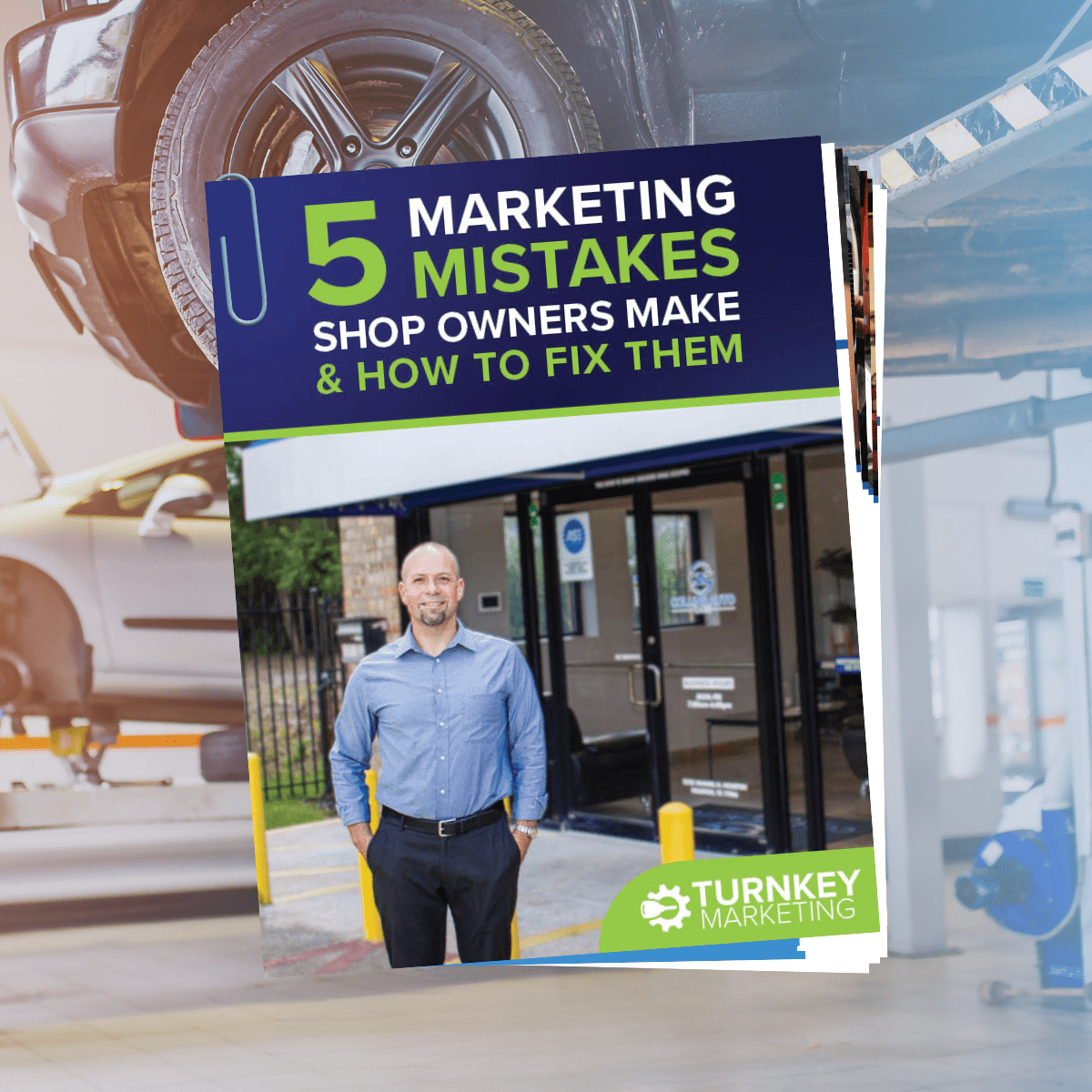
Your auto repair shop offers services that solve problems: you keep cars and trucks running safely and reliably with regular maintenance and repairs.
And your community is filled with potential customers—your market—who need those services.
So how do you connect your services with those customers?
Your marketing message.

When done right, your message is like a powerful magnet that attracts the right customers to your shop.
And how do you create a compelling message that shows those potential customers how you can help them?
Simple—these two keys unlock your marketing message:
- Talk about your customer’s problems
- Use fewer “we” words and more “you” words
Let’s dig in.
Talk about your customer’s problems
Once you’ve identified your ideal customers, you can then identify what their problems are and what’s important to them.
But getting their attention is hard. Marketing experts estimate we see 4,000 to 10,000 ads each day.
How do you break through all that clamor?
The key is this: people pay attention when you talk about their problems.
You may think, “We already do that. Their car needs fixing so we tell them we fix it. Tell me something I don’t know.”
Not so fast.
A lot of business—maybe yours?—only scratch the surface here.
In his bestselling book Building a StoryBrand, Donald Miller says we can speak to customer problems on three levels:
- External
- Internal
- Philosophical
We’ll look at each one and discover how you can use them to draw customers to your shop.
External problems
The external level is the problem at its face value. This is the first and simplest level.
When a car’s brake pads are worn and need to be replaced, your customer may notice a squealing or grinding noise. Or they may tell you the brakes feel “soft.”
In this case, the external problem is that the brakes need to be replaced.
Internal problems
Going deeper, the internal level is how the customer feels about the problem.
Think about how your customer feels about repairing their car—are they uncertain, embarrassed, confused? Are they afraid they’ll be taken advantage of?
How do they feel about driving a car that’s not safe—worried, anxious?
How will they feel after you fix the problem—confident, relieved, peaceful?
Going back to those noisy brakes, how does your customer feel about that?
I’m worried my car won’t stop safely. And the squealing is annoying and embarrassing. I hate it when I have to slow down and stop at an intersection.
Those are internal problems.
Philosophical problems
What’s the philosophical level? It isn’t about swapping profound ideas with Greek and German philosophers.
The philosophical level is about finding the values or beliefs you share with your customers, the “oughts,” “shoulds,” and “whys” you have in common.
Should your customer have to worry about finding a trustworthy shop? No.
Should your customer expect her car to be fixed right the first time? Of course.
Those are philosophical problems—basic values and beliefs you both share. We’re always looking for the people who are like us, and we’re more likely to do business with people we like.
Talking about those shared values helps the right customers find you.
Address all three problems
Every business talks about the external problem: We fix brakes.
But people buy to resolve their internal problems: I’m worried my car won’t stop. I’m embarrassed by this awful squealing racket.
And they’re more likely to do business with you when you share similar values: You shouldn’t have to worry about driving a car you don’t feel is safe.
Speak to all three levels of those problems and you’ll win more customers.
Use fewer “we” words and more “you” words
The second key is to talk in your customer’s language, the language of “you.”
Too many businesses get this wrong. They use too many we words and not enough you words.
We words are “we,” “us,” and “our.” It’s natural to use them because most of the time we think about life and business as it relates to ourselves.
But when you’re marketing your shop, you want to think about everything from your customer’s perspective.
That’s where you words come in.
Here’s an example of how we words often appear on a shop’s website:
- We offer same-day service for most repairs
- We only do the work you approve
- Our award-winning technicians have over 120 years of experience
Why is this a problem?
Because your customer doesn’t care about your shop. He cares about himself.
If you want to reach him, use more you and less we. Here are those same ideas written with you words:
- You shouldn’t have to wait days to get your car serviced. Call today—we’ll get you in today.
- You won’t be surprised with unexpected charges at XYZ Automotive. You’ll get our best advice and then we only do the work you approve.
- You can feel confident knowing our factory-trained and certified technicians service your car with skill and care.
Also—notice how you can quickly tap into your customer’s internal and philosophical problems when you use you words.
Cut the we and add the you to your marketing messages.
You’ll attract more customers.
Attract more customers with Turnkey Marketing
Need more customers for your auto repair shop?
Turnkey Marketing helps busy shop owners like you get more customers and get your time back so you can spend more time doing what only you can do.
Schedule a call today and we’ll help you attract more of the right customers to your shop.



